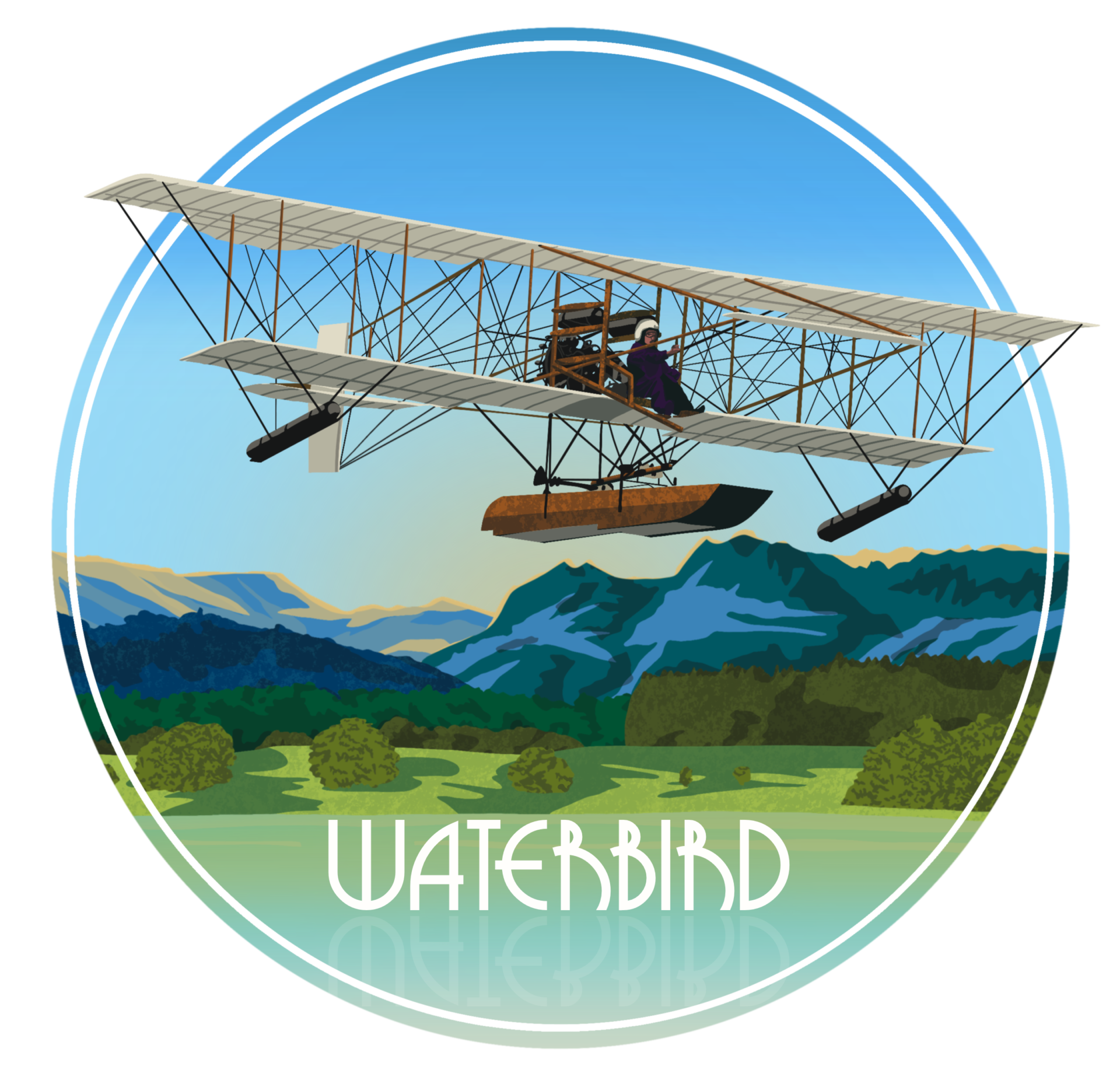Arthur Borwick, with Herbert Stanley Adams and the Deperdussin
Borwick & Sons
Borwick & Sons, boat builders of Bowness-on-Windermere, began their pioneering association with aviation in early 1910 which included hydro-aeroplanes, floats, propellers, maintenance and repair, ground support for passenger flights and flying boat hulls.
On 10 February 1900, the boat building partnership formed in 1890 of Nathaniel Shepherd (with dog on his lap) and Isaac Borwick was amicably dissolved.
Isaac Borwick became in business with his sons: John as draughtsman and master yacht builder, then George, a former Solicitor’s clerk, dealing with administration and later Arthur who developed the engineering department. Not only were there boat building and engineering departments, but also a blacksmith and an upholsterer. The location remained at Cockshott. In early 1910, Borwicks built the floats and hydro-aeroplanes of Oscar Gnosspelius – this photo is of Gnosspelius No.1 whilst testing the float, with Arthur looking on.
Borwicks’ pile driving barge was used, for example, upon delivery of a Deperdussin on 5 June 1912, and also for recovery of a Blackburn when it capsized on 1 April 1916.
Borwicks made Waterbird’s floats; Arthur was present for Waterbird‘s first flight on 25 November 1911.
New opportunities arose, but not without personal risk! In September 1912, Arthur lost the tops of 2 fingers which came into contact with a propeller (which ironically he had made) when turning it to start Waterhen’s engine. Waterhen, Waterbird’s successor, was built by Borwicks. George was turning a propeller for Gnosspelius when the engine roared into life and the propeller did ‘quick and irreparable damage to his traditional summer straw hat’. – A History of Windermere Motor Boat Racing Club from 1925 to 1975 by G Lambert and G E G Nayler. On 28 June 1913, a lady passenger in Waterhen leaned from her seat and waved to friends. Unfortunately, her hand was struck by the propeller leading to surgical amputation of a finger. – The Westmorland Gazette, 5 July 1913.
In 1918, Borwicks were subcontracted by Dick, Kerr & Co. Ltd. to construct Felixstowe F.3 flying boat hulls. – Dick, Kerr & Co. Limited: Engineers and Contractors by J Shorrock. Completed hulls were towed by motor boat to Lakeside and then transferred by rail to Preston, so as to be married up with wings and tail units.
Historic events which took place at their boatsheds included:-
i. On 25 November 1911, Gnosspelius setting out when he made the first successful take-off from Windermere
ii. Jack Kitchen developing the reversing rudder, which he patented in 1915
iii. In 1928, Estelle I and Estelle II launching. 85 miles per hour was attained by Betty Carstairs, the highest speed then reached on the lake. Each boat had a single Napier Lion VIIB engine, of the type which powered the 1927 Schneider Trophy-winning Supermarine S.5 seaplane
iv. In 1930, Sir Henry Segrave, a former pilot in the Royal Flying Corps, superintending the initial tests of Miss England II, built by Saunders-Roe Ltd. Miss England II launching on 5 June which had twin Rolls-Royce R engines, of the type which powered the 1929 Schneider Trophy-winning Supermarine S.6. Tragically, Segrave was killed on 13 June when the boat crashed, having beaten the water speed record.
On 2 July 1924, a serious fire occurred.
Bill Bland started building boats at Windermere in 1899, and was employed from 1908 until 1954. Lifeboats for the Merchant Navy, seaplane tenders for the RAF and admiral’s barges were made. Bland claimed that ‘more work was turned out during World War 2 for the size of the workshop than anywhere else in the country’. – Cumbria magazine, January 1954.
The name was changed to Borwicks (Windermere), Ltd. in 1928.
Craft were sent as far afield as America, Belgium, Egypt, India and the Red Sea; Borwicks being described by Isaac’s daughter Elizabeth Clark as being ‘to the Lake District what Cammell Lairds is to Birkenhead’. – Cumbria magazine, May 1964.
The premises were demolished upon the company being taken over by Windermere Aquatic Ltd. in 1972.
– Grateful thanks to Catriona Bailey and Jonathan Swift, great-grandchildren of Isaac Borwick, for providing photos.
